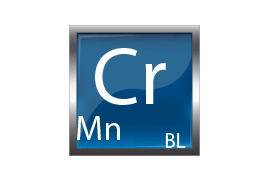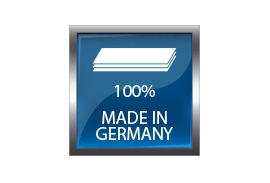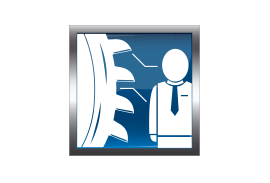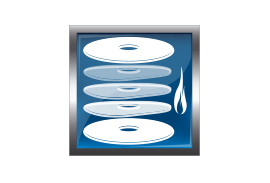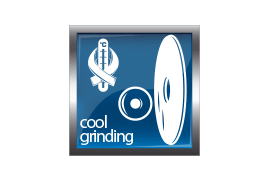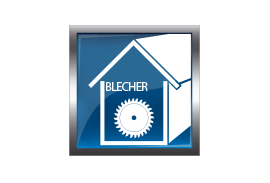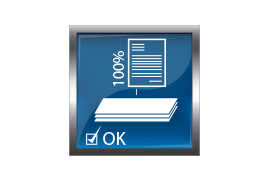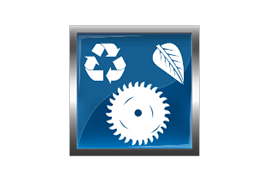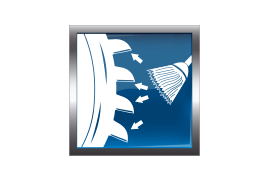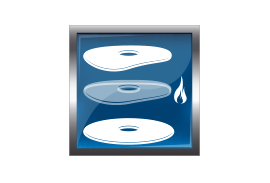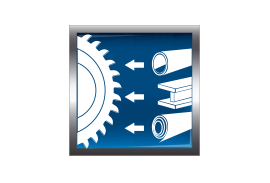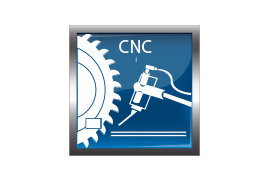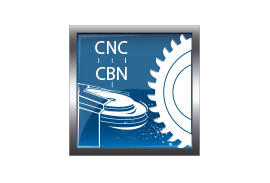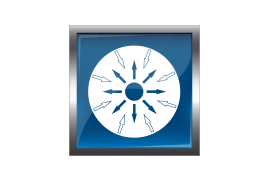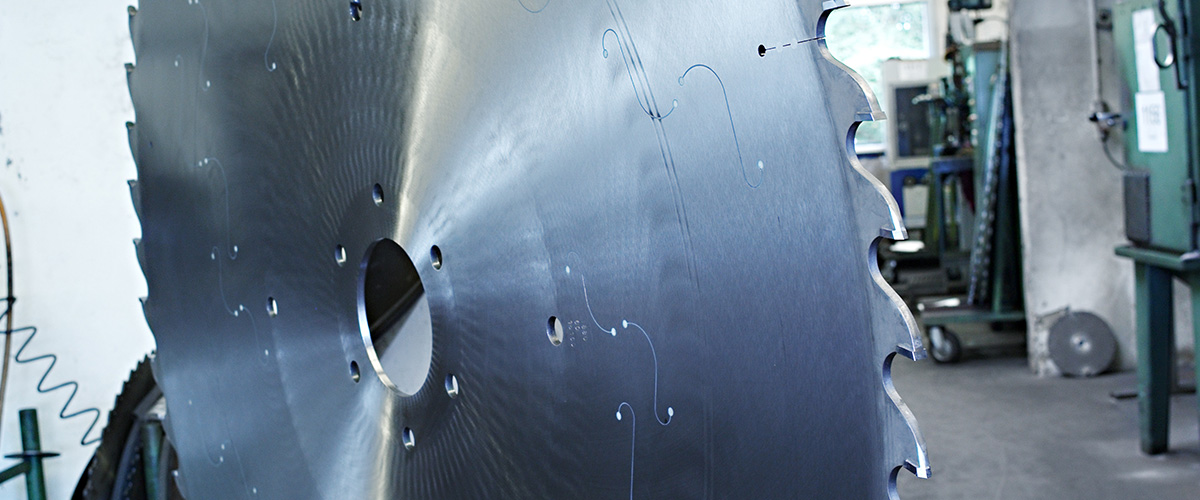
Tungsten Carbide Tipped Circular Saw Blades for Non-Ferrous Metals
Accurate, burr free and extremely fast – Saw Blades for Non-Ferrous Metals
High-precision, burr free cuts with fastest speed – this is what BLECHER TCT saw blades stand for. Numerous particular, BLECHER specific manufacturing processes and a blade design that has been tailored to match with the individual cutting job supply the impressive performance and the extremely long service life of BLECHER TCT saw blades. Suited for stationary and flying sawing plants with blade diameter up to 2,230 mm.
Tooth forms:
- triple chip geometry to divide the chip into 3 parts
- unique “block tooth geometry” for extraordinary surface finish and high cutting speeds
- chip breaker geometry, preferably for tubes
- all tooth forms optionally available with C-shaped hook for improved chip forming
| Material | Strength | Cutting Speed | Chip Load |
|---|---|---|---|
| Aluminium/Aluminium | 200-250 N/mm^2 | 2500-4000 m/min | 0,03-0,06 mm/Zahn,/tooth |
| 350-500 N/mm^2 | 2000-3000 m/min | 0,015-0,05 mm/Zahn /tooth |
|
| Messing/ Brass | Normal zerspanbar (z.B.MS58)/ with normal machinability (e.g. MS58) |
250-350 m/min | 0,07-0,12 mm/Zahn /tooth |
| Messing/ Brass | Sonderlegierungen (z.B. LG488) / special alloys (e.g. LG488) |
150-250 m/min | 0,06-0,10 mm/Zahn /tooth |
| Kupfer/Kupferlegierungen,Copper/ Copper Alloys |
Sehr gut zerspanbare Werkstoffe (z.B. CL12)/ very well machinable material (e.g. CL12) |
240-350 m/min | 0,05-0,10 mm/Zahn /tooth |
| Kupferlegierungen/ Copper Alloys |
Gut bis mäßig zerspanbare Werkstoffe (z.B. CH40)/ well to moderately machinable material (e.g. CH40) |
200-250 m/min | 0,04-0,08 mm/Zahn /tooth |
| Kupferlegierungen/ Copper Alloys |
Mäßig bis schwer zerspanbare Werkstoffe (z.B. CN32) / moderately to hardly machinable material (e.g. CN32) |
150-200 m/min | 0,04-0,08 mm/Zahn /tooth |
Applications:
cutting non-ferrous metals virtually free of burr in rolling and continuous casting mills and during further processing e.g. to cut drawn, rolled or extruded tubes or profiles
Typical main dimensions:
| Diameter mm | Teeth | Tooth Spacing mm | Kerf mm | Saw body thickness mm mm |
|---|---|---|---|---|
| 710 | 50 | 44,61 | 6,5 | 5,0 |
| 710 | 100 | 22,31 | 6,5 | 5,0 |
| 900 | 60 | 47,12 | 7,8 | 6,0 |
| 1120 | 120 | 29,32 | 8,2 | 6,5 |
| 1250 | 54 | 72,72 | 10 | 7,5 |
| 1600 | 60 | 83,78 | 11 | 8,5 |
| 1880 | 60 | 98,44 | 14,5 | 9 |
Sawing machine:
horizontal and vertical cold sawing machines with high drive capacity, rigid gear box and opening device for the cutting gap, i.e. Framag, Lazzari, Linsinger, MFL, Ohler, Wagner, Asmag, Hertwich, Trennjäger, Kaltenbach
Other options:
- Single or multiple riveted expansion slots coupled with the SilentCut system as an option supply best possible reduction of noise and vibration to achieve highest cutting speeds
BLECHER QualitY Features
Application oriented selection of blade material
Material selection from a wide range of different alloys and characteristics for application dependent wear life, hardness, stability and toughness, e.g. 51Mn7mod., 75Cr1, 80CrV2, 73WCrMoV2-2, X155CrVMo12-1, S 6-5-2, BLECHER proprietary steel grades BL50, BL55 & BL60/BL80
100% Made in Germany
All materials used for BLECHER saw blades have been made in Germany
Individual tooth geometries
Tooth and cutting edge geometry optimized to each customer-specific application
Tempering with multiple annealing
Technically matured annealing processes with most advanced furnaces, for hardening and (where appropriate multiple) tempering
Cool Grinding
In-house developed “cool grinding” technology with most modern PLC controlled grinding machines reduce heat impact during processing and avoid unwanted residual stress
In-house development
Saw bodies are all engineered, designed and made in house, this ideally matched with each individual application
Consistent documentation
Consistent documentation of all use materials, manufacturing steps and measuring results including from final inspection for each production job
Highest environmental standards
Technically matured annealing processes with most advanced furnaces, for hardening and (where appropriate multiple) tempering
Cutting edge rounding
Brushing process to round the cutting edges which avoids premature tip cracking or the need for running in the saw blade
Thermal stress relieve
Blades are thermally stress relieved to eliminate uncontrollable and unwanted residual stresses from the material rolling process which potentially can create performance deviations during use
Thermochemical platings
Thermos-chemical platings and hard material coatings available for higher cutting speeds and reduced wear
Optimized hardness/toughness
Cutting edge and tip material with optimized hardness, toughness, composition and edge stability as required by the cutting job and the cutting parameters
PLC and pyrometer controlled brazing
PLC and pyrometer controlled automatic brazing for durably reliable welding joints of the carbide tips with no surface hardness increase of the carrier material (saw body)
PLC controlled CBN grinding
PLC controlled CBN grinding of carbide tip pocket seats and tooth geometry with oil cooling for lowest heat impact and continuous precision
Controlled tensioning
Targeted, controlled, reproducible and application oriented blade tensioning guarantees straight cuts with no deviations even across numerous service cycles

